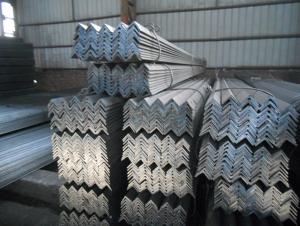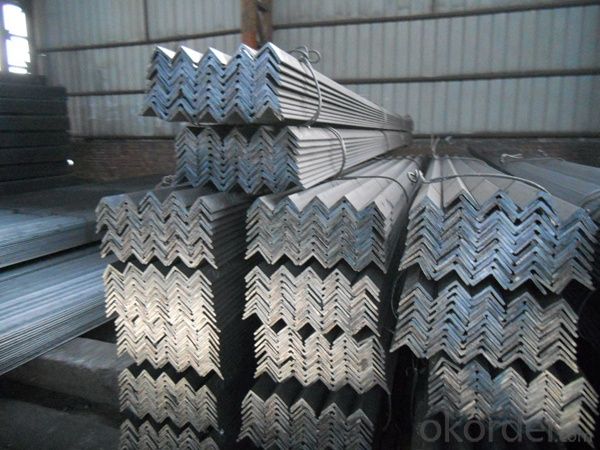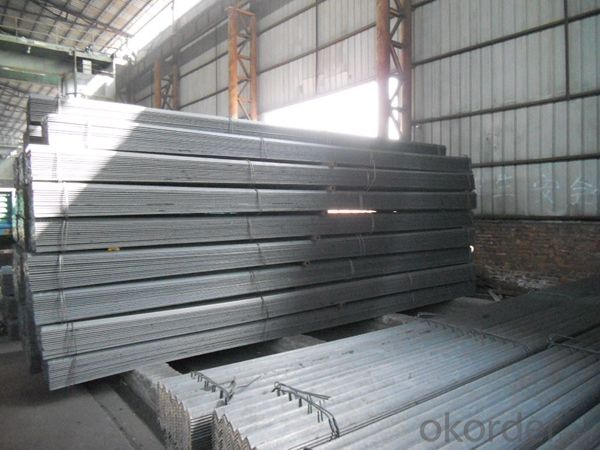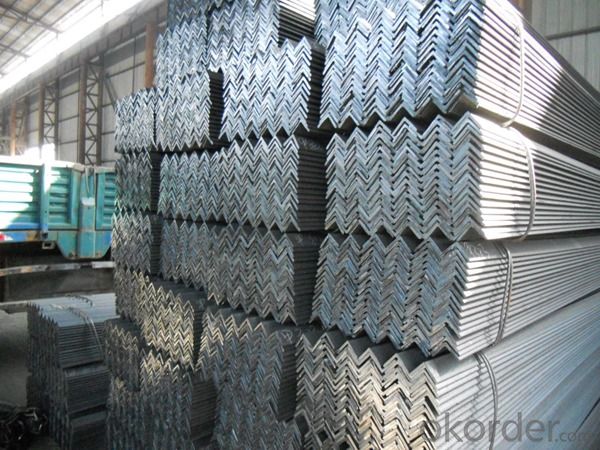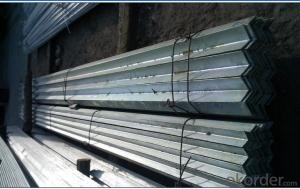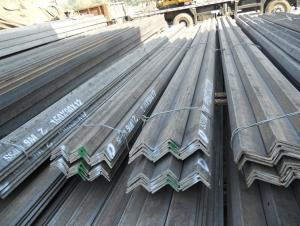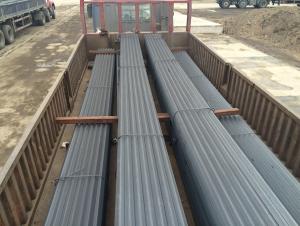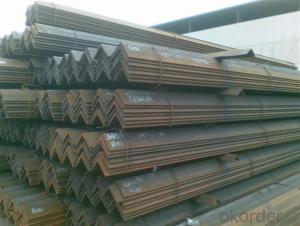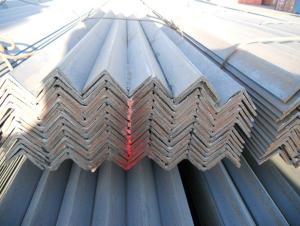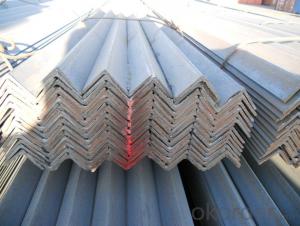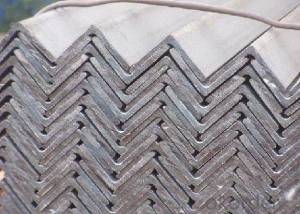Q345 angle, angle steel, galvanized angle steel
- Loading Port:
- Tianjin
- Payment Terms:
- TT or LC
- Min Order Qty:
- 25 m.t
- Supply Capability:
- 1000 m.t/month
OKorder Service Pledge
OKorder Financial Service
You Might Also Like
Specification
Product Description:
OKorder is offering Q345 angle, angle steel, galvanized angle steelat great prices with worldwide shipping. Our supplier is a world-class manufacturer of steel, with our products utilized the world over. OKorder annually supplies products to European, North American and Asian markets. We provide quotations within 24 hours of receiving an inquiry and guarantee competitive prices.
Product Applications:
Q345 angle, angle steel, galvanized angle steel are ideal for structural applications and are widely used in the construction of buildings and bridges, and the manufacturing, petrochemical, and transportation industries.
Product Advantages:
OKorder's Q235 Small angle, angle steel, galvanized angle steel are durable, strong, and resist corrosion.
Main Product Features:
· Premium quality
· Prompt delivery & seaworthy packing (30 days after receiving deposit)
· Corrosion resistance
· Can be recycled and reused
· Mill test certification
· Professional Service
· Competitive pricing
Product Description:
Angle called angle, the steel strip is perpendicular to each other on both sides into angular.Divided into equilateral angle steel and ranging from side angle. Two equilateral angle steel edge width is the same. The specification is expressed by edge width * width * thick edgenumber of millimeters. Such as "/ 30 x 30 x 3", namely that equilateral angle steel edge widthof 30 mm, 3 mm thick edge. Can also be used to model representation, model is the wideangle 3# cm, such as. The model does not represent the same type in different edge thickness size, thus in the contract and other documents on the angle of the edge width, edgethick size fill in complete, avoid alone represented by type. Hot rolled equilateral angle steelspecifications for 2#-20#. Angle according to the different needs of structure composed of a variety of stress components, can also be used as a component of the connections between the. Widely used in a variety of architectural and engineering structures, such as beams,bridges, towers, hoisting and conveying machinery, ships, industrial furnace, reactor,container frame and warehouse.
Mainly divided into equilateral angle steel, equilateral angle steel two categories, includingunequal angle can be divided into equal thickness and unequal thickness ranging from two.
Angle specifications with the side length of the size and edge thickness. At present, the domestic steel specifications for 2 - 20 cm in length, number of numbers, the same horn steel often have 2 - 7 different edge thickness. The actual size and inlet angle marked on both sides of the thickness and indicate the relevant standards. The general length of more than 312.5px for large angle steel, 312.5px - 125px for the medium angle, length of 125px for smallangle.
Inlet and outlet angle steel orders generally required the use specifications in the steel,carbon structural steel grades as appropriate. Is the angle in addition to standard number, nospecific composition and performance series.
Angle steel delivery length is divided into fixed length, size two, domestic steel length range is3 - 9m, 4 12M, 4 19m, 6 19m four range according to different specifications. Japanese steellength ranges from 6 to 15m.
Section of unequal angle height according to the long edge of the width to calculate the non equilateral angle steel. Refer to section angle and side length is not equal to the steel. Is a kind of angle steel. The length from 25mm * 16mm to 200mm * l25mm. By the hot rolling mill rolling in. General scalene angle steel specifications: thickness of 4-18mm / 50*32-- / 200*125
Equilateral angle steel is widely used in all kinds of metal structures, bridges, machinery manufacturing and shipbuilding industry, all kinds of architectural and engineering structures,such as beams, bridges, towers, hoisting and conveying machinery, ships, industrial furnace,reactor, container frame and warehouse etc.
FAQ:
Q1: Why buy Materials & Equipment from OKorder.com?
A1: All products offered byOKorder.com are carefully selected from China's most reliable manufacturing enterprises. Through its ISO certifications, OKorder.com adheres to the highest standards and a commitment to supply chain safety and customer satisfaction.
Q2: Can fit in the containers of 20fts the steel beams of 6M?
A2: No proble, we can put them into the containers in the form sideling.
Q3: The products are invoicing on theoritical weight or on actual weight?
A3: We can do it in both manners, according to the customers' request.
Images:
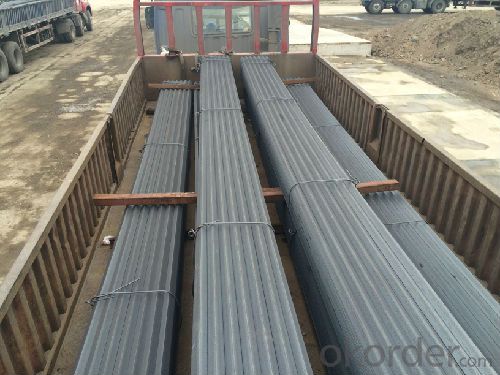
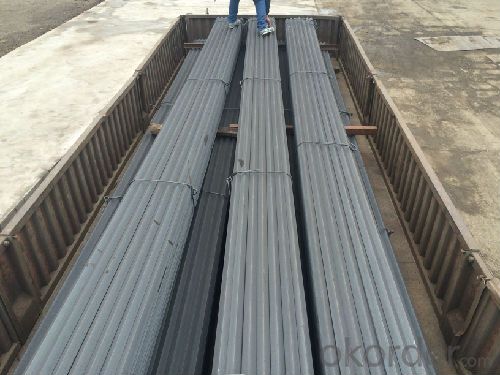
- Q: What are the different types of steel angles used in shelving units?
- There are several different types of steel angles that are commonly used in shelving units. Some of the most common types include: 1. L-shaped angles: These are the most basic type of steel angles used in shelving units. They have a 90-degree angle and are commonly used to create the frame of the shelving unit. 2. Slotted angles: Slotted angles are similar to L-shaped angles but have holes or slots along their length. These holes allow for easy adjustment of the shelving height and allow for flexibility in configuring the shelving unit. 3. Equal angles: Equal angles have equal length legs and are commonly used in shelving units where the shelves are made of steel or other heavy materials. These angles provide additional strength and support to the shelves. 4. Unequal angles: Unequal angles have legs of different lengths. They are often used in shelving units where the shelves are made of lighter materials such as wood or plastic. The unequal angles provide stability and prevent the shelves from sagging under the weight of the items placed on them. 5. Slotted equal angles: Slotted equal angles are similar to slotted angles but have equal length legs. These angles are commonly used in shelving units where adjustability is required, but the added strength of equal angles is also needed. Overall, the choice of steel angles for shelving units depends on the specific requirements of the unit, such as load capacity, adjustability, and material used for the shelves.
- Q: What are the different types of connections used for steel angles in commercial applications?
- There are several types of connections used for steel angles in commercial applications, including bolted connections, welded connections, and cleat connections. Bolted connections involve using bolts and nuts to secure the angles together, while welded connections involve fusing the angles together using welding techniques. Cleat connections involve using a separate piece of steel, called a cleat, to connect the angles together. The choice of connection type depends on factors such as the load requirements, design specifications, and ease of installation.
- Q: What is the maximum load capacity for a steel angle beam?
- The maximum load capacity of a steel angle beam is influenced by several factors, including the beam's size and dimensions, the grade of steel employed, and the intended use or application. While steel angle beams are frequently utilized in construction and structural contexts to bear loads, the precise maximum load capacity may differ. To ascertain the specific maximum load capacity of a steel angle beam in a given scenario, it is crucial to refer to engineering specifications, structural design codes, or seek guidance from a structural engineer.
- Q: Can steel angles be used in mezzanine or raised platform constructions?
- Yes, steel angles can be used in mezzanine or raised platform constructions. Steel angles are versatile structural elements that can provide support and stability in construction projects. They are commonly used as framing members in mezzanine or raised platform structures due to their strength and load-bearing capabilities. Steel angles can be easily connected to other steel components, such as beams and columns, to form a rigid framework for the mezzanine or raised platform. Additionally, steel angles can be used to create bracing and reinforcement elements, enhancing the overall stability and safety of the structure. Overall, steel angles are a popular choice for mezzanine or raised platform constructions due to their durability, versatility, and cost-effectiveness.
- Q: What are the common applications of steel angles in architecture?
- Due to their versatility and strength, steel angles are extensively utilized in architecture for various purposes. Here are some common applications of steel angles in architecture: 1. Building construction often relies on steel angles as structural support elements. By welding or bolting them together, a robust framework is formed, providing the necessary strength and stability to the structure. 2. Steel angles are commonly employed in framing applications, such as constructing door and window frames, as well as roof trusses. They ensure rigidity and support, ultimately contributing to the stability and longevity of the overall structure. 3. Reinforcing concrete structures is another popular use of steel angles. Embedding them into concrete walls, columns, and beams enhances their load-bearing capacity and resistance to deformation. 4. Staircases and handrails are frequently constructed using steel angles. These angles form a sturdy framework that guarantees the safety and stability of these architectural elements. 5. Steel angles are also employed for architectural detailing purposes. They can be utilized to create decorative elements like cornices, brackets, and ornamental features, which enhance the aesthetic appeal of the building. 6. In industrial settings, such as factories and warehouses, steel angles are utilized to create robust platforms, mezzanines, and equipment supports. In summary, steel angles are a versatile and reliable material that offers numerous benefits for architectural applications. Their strength, durability, and flexibility make them an ideal choice for a wide range of architectural structures and features.
- Q: How are steel angles tested for quality and strength?
- Steel angles are tested for quality and strength through various methods, including visual inspection, measurement of dimensions, and mechanical testing. Visual inspection involves checking for any visible defects or imperfections such as cracks, surface irregularities, or rust. Measurement of dimensions ensures that the angles meet the specified size and shape requirements. Mechanical testing involves subjecting the angles to forces or loads to determine their strength, such as tensile testing to measure their resistance to pulling or bending, and hardness testing to assess their resistance to indentation. These tests help ensure that steel angles meet the desired quality and strength standards.
- Q: Can steel angles be used for manufacturing vehicle frames?
- Indeed, vehicle frames can be manufactured using steel angles. Owing to their robustness and capacity to offer structural reinforcement, steel angles are frequently employed in construction and engineering. By welding or bolting them together, a resilient and long-lasting frame for vehicles can be effortlessly created. These angles can be conveniently tailored and contoured to meet precise design specifications, enduring the diverse strains and pressures that a vehicle frame may face while in operation. Moreover, steel angles are easily accessible and economical, rendering them a favored option for vehicle frame production.
- Q: Can steel angles be used in temporary or modular structures?
- Yes, steel angles can be used in temporary or modular structures. Steel angles provide structural support and stability, making them suitable for various construction applications, including temporary or modular structures. They can be easily fabricated and assembled, offering flexibility and durability required for such structures.
- Q: Can steel angles be used as bracing elements in buildings?
- Yes, steel angles can be used as bracing elements in buildings. Steel angles provide structural support and stability, making them suitable for use as bracing elements to resist lateral forces and improve the overall strength of a building.
- Q: Can steel angles be used as support beams?
- Indeed, it is possible to utilize steel angles as support beams. Due to their remarkable strength and durability, steel angles find widespread application in the construction industry. They frequently serve as support beams, contributing to the structural integrity and stability of various edifices, bridges, and other infrastructures. The ease of fabrication and installation of steel angles renders them a highly favored option in construction ventures. Their adaptability and capacity to withstand substantial loads render them exceptionally suitable for deployment as support beams.
Send your message to us
Q345 angle, angle steel, galvanized angle steel
- Loading Port:
- Tianjin
- Payment Terms:
- TT or LC
- Min Order Qty:
- 25 m.t
- Supply Capability:
- 1000 m.t/month
OKorder Service Pledge
OKorder Financial Service
Similar products
Hot products
Hot Searches
Related keywords
